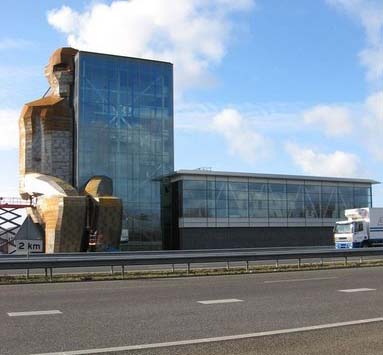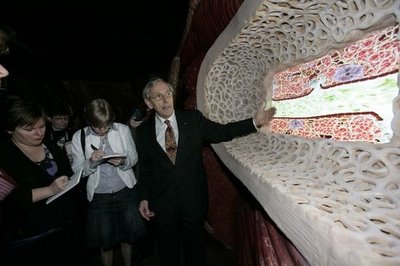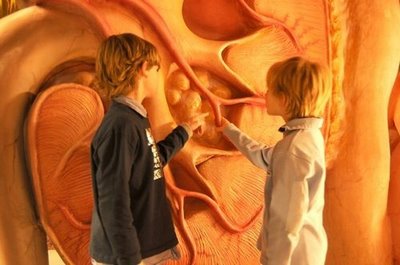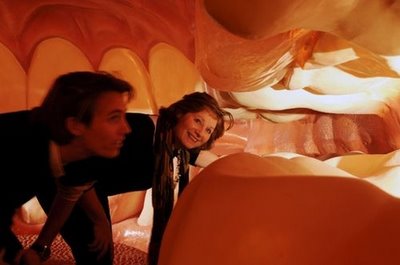Walking in the human body
Visit the Corpus Museum - just inaugurated in the city of Oegstgeest, the Netherlands - visitors not only have the opportunity to 'enter' the human body, but also explore its mechanism of action.

Corpus Museum.(Photo: corpus-experience)
Corpus Museum is 35m high, 7 storeys, has a rather unique architecture when a part of it has a human figure sitting, and a half 'hidden' inside the building architecture. Guests will have a 55-minute tour when coming here. After being lifted up by conveyor belt, the discovery will start from . knees. Visitors visit every part of the human body for 7 minutes and end the journey at the brain part.

Visiting the museum, viewers will relate to the animated film The Magic School Bus (The Magic School Bus), in which the children travel through many places and discover the organs of a character.

After passing the knee, the viewer will get into the femur. Here they will observe the formation of white blood cells and red blood cells as well as study the mechanism of tendons and joints when people go or run. When it comes to the womb of a woman, the formation of the fetus (3-dimensional image) will appear. Then go to the digestive apparatus, respiratory system, heart, tongue, throat and sound mechanism.

At the tip of the nose and ears, it will be interesting to see how the sneezing process takes place. At the eye part, they know how light is entering the retina, images are transferred to the brain as well as the mechanism of brain activity. All developments in the human body are expressed very vividly with sound.

The ticket price for the museum is 16.5 euros for adults and 14 euros for children (aged 8 and over). During the adventure of exploring the human body, visitors can touch and shape those parts. The most interesting part is when it gets into the heart. Viewers will feel like red blood cells, traveling to other organs through the body's main 'pump' . To make this look like a real person, each person will be given a special float glass. This 'show' will repeat when the viewer reaches the brain.

At the museum, there is a medical center and also a list, address of specialized doctors, consultants, so that when a viewer can be contacted through instructions or medical examination . Viewers can listen to presentations on nutrition and medical topics to help them live healthier. The organizers hope, after going out of the museum, viewers will have a different perspective on their bodies and more care about health care.

- Why do people swing their hands when walking?
- Amazing discovery of the human body
- Walking way affects people's psychology
- 10 mistakes to avoid when walking
- Walking like this, living for an additional 15-20 years
- 20 great things about the human body
- The faster you walk, the longer you will last!
- 5 questions without answers about the human body
- Amazing things about the human body
- Walking fitness - not completely harmless
- While walking, texting ruined the posture
- 26 extremely special things about the human body
 Norway built the world's tallest wooden tower
Norway built the world's tallest wooden tower Kremlin
Kremlin Ashurbanipal: The oldest royal library in the world
Ashurbanipal: The oldest royal library in the world Decoding the thousand-year construction of Qin Shihuang shocked the world
Decoding the thousand-year construction of Qin Shihuang shocked the world